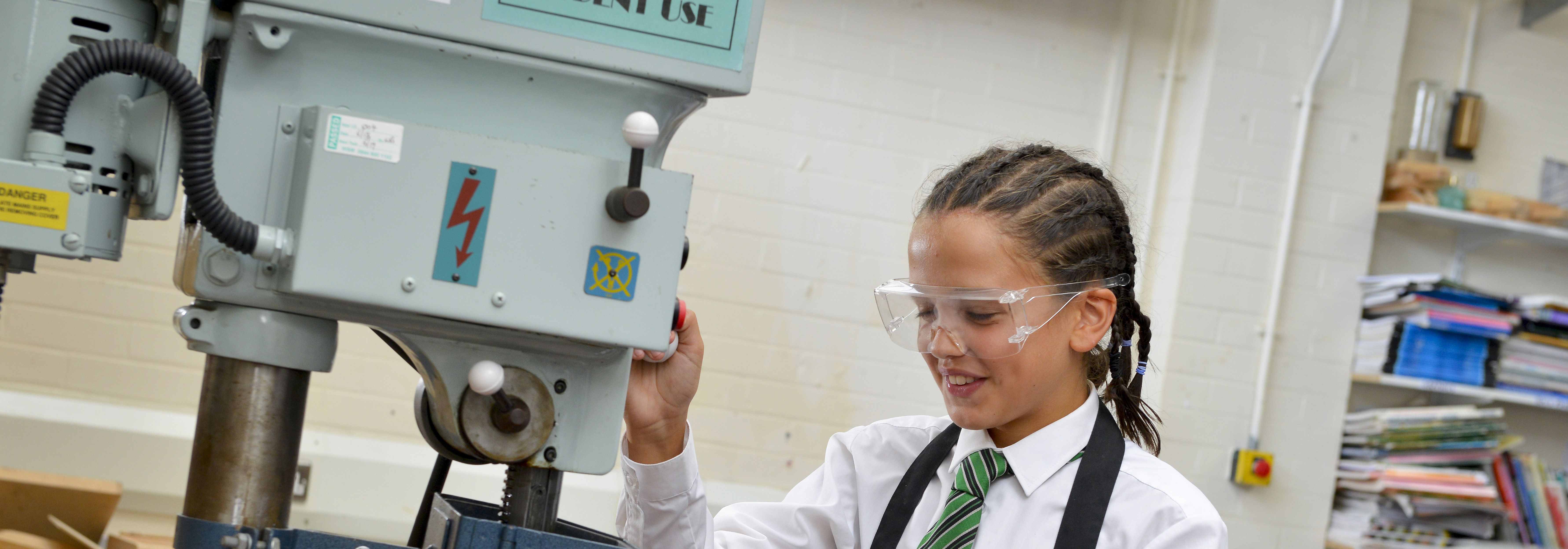Knowledge and Skills
The Knowledge and Skills overviews show the specific mathematical content students will learn in each unit of study throughout the year. These documents outline both the substantive knowledge (mathematical facts, concepts, and principles) and the disciplinary skills (mathematical techniques and applications) that students will develop. Each unit is broken down to clearly identify what students need to know and what they should be able to do upon completion. Through the systematic development of both knowledge and skills, students build mathematical fluency, reasoning abilities, and problem-solving capabilities appropriate to their stage of learning.
Select a unit to find out more...
Factors, Multiples, Primes
| Unit Progress Criteria |
| Knowledge |
Skills |
- Understanding of factors and multiples, including how to find factors of a number and list multiples.
- Knowledge of prime numbers and prime factorisation.
- Familiarity with the least common multiple (LCM) and greatest common divisor (HCF).
|
- Identifying factors and multiples of given numbers.
- Performing prime factorisation and expressing numbers as products of prime factors.
- Calculating LCM and HCF of sets of numbers.
- Solving problems involving factors, primes, and multiples.
|
Addition and subtraction with fractions
| Unit Progress Criteria |
| Knowledge |
Skills |
- Understanding how to find a common denominator for adding and subtracting fractions.
- Knowledge of simplifying fractions after performing operations.
- Familiarity with converting between fractions, mixed numbers, and improper fractions.
|
- Adding and subtracting fractions with like and unlike denominators.
- Simplifying the resulting fractions to their simplest form.
- Converting mixed numbers to improper fractions and vice versa.
- Solving problems that involve addition and subtraction of fractions.
|
Directed Number
| Unit Progress Criteria |
| Knowledge |
Skills |
- Understanding positive and negative numbers and their placement on the number line.
- Knowledge of the rules for adding, subtracting, multiplying, and dividing directed numbers.
|
- Performing operations with directed numbers, including addition, subtraction, multiplication, and division.
- Applying the rules of directed numbers to solve problems.
- Using the number line to visualise and calculate with directed numbers.
|
Collecting like terms, expanding expressions, factorising, substitution and solving equations
| Unit Progress Criteria |
| Knowledge |
Skills |
- Understanding the concept of like terms and how to combine them.
- Knowledge of the distributive property for expanding algebraic expressions.
- Understanding factorisation of algebraic expressions, including finding common factors
- Knowledge of substitution to evaluate expressions and solve equations
- Familiarity with solving simple linear equations
|
- Collecting and combining like terms in algebraic expressions.
- Expanding expressions using the distributive property (e.g., a(b+c)=ab+ac
- Simplifying expressions after expansion and combination.
- Factorising algebraic expressions by extracting common factors
- Substituting values into algebraic expressions and solving for variables
- Solving linear equations by isolating the variable
- Checking solutions to ensure they satisfy the original equations.
|
Sequences
| Unit Progress Criteria |
| Knowledge |
Skills |
- Understanding the concept of sequences and how they progress according to a specific pattern.
- Knowledge of different types of sequences, such as arithmetic sequences (where each term increases or decreases by a constant difference) and geometric sequences (where each term is multiplied by a constant ratio).
- Understanding the nth term rule for sequences, which expresses the pattern of the sequence in a general formula to find any term in the sequence.
|
- Identifying the pattern in a sequence and determining whether it is arithmetic, geometric, or another type.
- Using the nth term rule to find specific terms in the sequence and to derive the general formula.
- Generating terms of a sequence based on its nth term formula and identifying the rule that governs the sequence.
- Solving problems involving sequences by applying the nth term rule to find terms or solve for a specific term position.
- Verifying the correctness of the nth term rule by substituting values and checking if the generated sequence matches the given terms.
|
Angles in Parallel Lines
| Unit Progress Criteria |
| Knowledge |
Skills |
- Understanding the properties of angles formed by parallel lines and a transversal (e.g., corresponding angles, alternate interior angles).
|
- Identifying and calculating angles formed by parallel lines and a transversal.
- Applying angle properties to solve problems involving parallel lines.
- Verifying angle relationships using geometric principles.
|
Constructions
| Unit Progress Criteria |
| Knowledge |
Skills |
- Understanding basic geometric constructions, such as drawing perpendicular lines and angle bisectors.
- Knowledge of tools used in constructions (e.g., ruler, compass, protractor).
|
- Using a compass and ruler to accurately construct geometric shapes and figures.
- Performing geometric constructions based on given criteria and verifying accuracy.
- Solving problems that involve constructing and analysing geometric figures.
|
Area and perimeter problems
| Unit Progress Criteria |
| Knowledge |
Skills |
|
|
- Use formulas to determine the perimeter of basic shapes and composite shapes.
- Apply formulas to find the area of various shapes, including decomposing composite shapes into simpler parts.
- Solve practical problems involving area and perimeter, including converting between units if needed.
|
Percentages
| Unit Progress Criteria |
| Knowledge |
Skills |
- Understanding percentages as a way to express proportions out of 100.
- Knowledge of how to calculate percentage increases and decreases.
- Understanding how to find percentages of amounts.
- Knowledge of reverse percentages to determine the original amount before a percentage change.
- Familiarity with converting between percentages, fractions, and decimals.
|
- Calculating percentages of given amounts.
- Determining percentage increases or decreases in various contexts.
- Solving problems involving reverse percentages to find the original amount before a percentage change.
- Converting between percentages, fractions, and decimals as needed for solving percentage problems.
|
Ratio
| Unit Progress Criteria |
| Knowledge |
Skills |
- Understanding ratios as a way to compare two or more quantities.
- Knowledge of how to simplify ratios and express them in different forms (e.g., 3:2, 3/5).
- Familiarity with how to use ratios to solve problems involving proportions and scaling.
|
- Simplifying ratios by dividing both terms by their greatest common divisor.
- Solving problems involving ratios, such as mixing solutions or comparing quantities.
- Scaling ratios up or down based on given conditions or requirements.
|
Speed
| Unit Progress Criteria |
| Knowledge |
Skills |
- Understanding the relationship between speed, distance, and time, encapsulated by the formula: Speed = Distance / Time.
- Knowledge of units for speed (e.g., meters per second, kilometers per hour), distance (e.g., meters, kilometers), and time (e.g., seconds, minutes, hours).
- Familiarity with conversions between units of speed, distance, and time.
|
- Calculating speed using the formula Speed = Distance / Time.
- Determining distance using the formula Distance = Speed × Time.
- Finding time using the formula Time = Distance / Speed.
- Solving problems involving speed, distance, and time, including unit conversions and interpreting data from various contexts.
|
Rounding and estimation
| Unit Progress Criteria |
| Knowledge |
Skills |
- Understanding the concepts of rounding numbers to the nearest ten, hundred, or other place values including significant figures.
- Knowledge of estimation techniques to approximate values.
|
- Rounding numbers to a specified place value and performing estimation for calculations.
- Using rounding and estimation to solve problems and make approximate calculations.
- Checking the reasonableness of answers using estimation.
|
Area and circumference of circles
| Unit Progress Criteria |
| Knowledge |
Skills |
- Understanding the formulas for calculating the area (Area = π × radius²) and circumference (Circumference = 2 × π × radius) of a circle.
- Knowledge of the relationship between the radius and diameter.
- Knowledge of parts of a circle such as radius, diameter, etc.
|
- Calculating the area and circumference of circles using the appropriate formulas.
- Solving problems involving the area and circumference of circles.
- Converting between different units of measurement for circles if necessary.
|
3D Shapes
| Unit Progress Criteria |
| Knowledge |
Skills |
- Understanding the properties of common 3D shapes, including faces, edges, and vertices.
- Knowledge of different types of 3D shapes, such as cubes, cuboids, cylinders, spheres, and cones.
- Understanding plans and elevations as methods to represent 3D shapes in 2D views.
|
- Identifying and describing the properties of various 3D shapes, including counting faces, edges, and vertices.
- Drawing and visualizing 3D shapes from different perspectives.
- Creating and interpreting plans (top view) and elevations (front, side views) of 3D shapes.
- Solving problems involving 3D shapes, such as determining dimensions, and analysing plans and elevations.
|
Volume & Surface Area
| Unit Progress Criteria |
| Knowledge |
Skills |
- Understanding the formulas for calculating the volume of common 3D shapes (e.g., cubes, cuboids, cylinders).
- Knowledge of units of volume (e.g., cubic centimetres, litres).
- Understanding the formulas for calculating the area of common 2D shapes (e.g. squares, rectangles, circles, etc.)
- Knowledge of how to sum the areas of all faces or surfaces of 3D shapes.
|
- Calculating the volume of 3D shapes using appropriate formulas (e.g., Volume of a cube = side³, Volume of a cylinder = π × radius² × height).
- Solving problems involving the volume of various 3D shapes.
- Converting between different units of volume if needed.
- Calculating the surface area of 3D shapes
- Solving problems that involve finding the surface area of various 3D shapes
- Verifying calculations by checking the dimensions and units
|
Averages
| Unit Progress Criteria |
| Knowledge |
Skills |
- Understanding different measures of central tendency: mean, median, and mode.
- Understand what the range of a set of data represents.
- Knowledge of how to calculate each measure of average.
- Understand how to find the averages from a (grouped) frequency table.
|
- Calculating the mean by finding the sum of values and dividing by the number of values.
- Determining the median by ordering values and finding the middle value.
- Identifying the mode as the most frequently occurring value in a dataset.
- Solving problems that involve calculating and interpreting averages in various contexts.
- Solving problems involving averages from a frequency table.
|
Data: bar charts, pictograms and pie charts
| Unit Progress Criteria |
| Knowledge |
Skills |
- Understanding the components and purposes of different types of data representations: bar charts, pictograms, and pie charts.
- Knowledge of how to read and interpret data from these charts, including understanding scales and keys.
|
- Reading and interpreting data from bar charts, pictograms, and pie charts to extract and analyse information.
- Creating accurate bar charts, pictograms, and pie charts based on given data.
- Comparing and contrasting data presented in different types of charts.
- Solving problems involving the interpretation and creation of data representations, ensuring accuracy and clarity.
|












